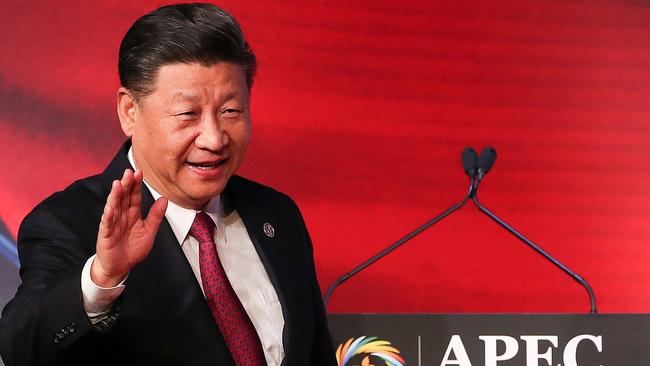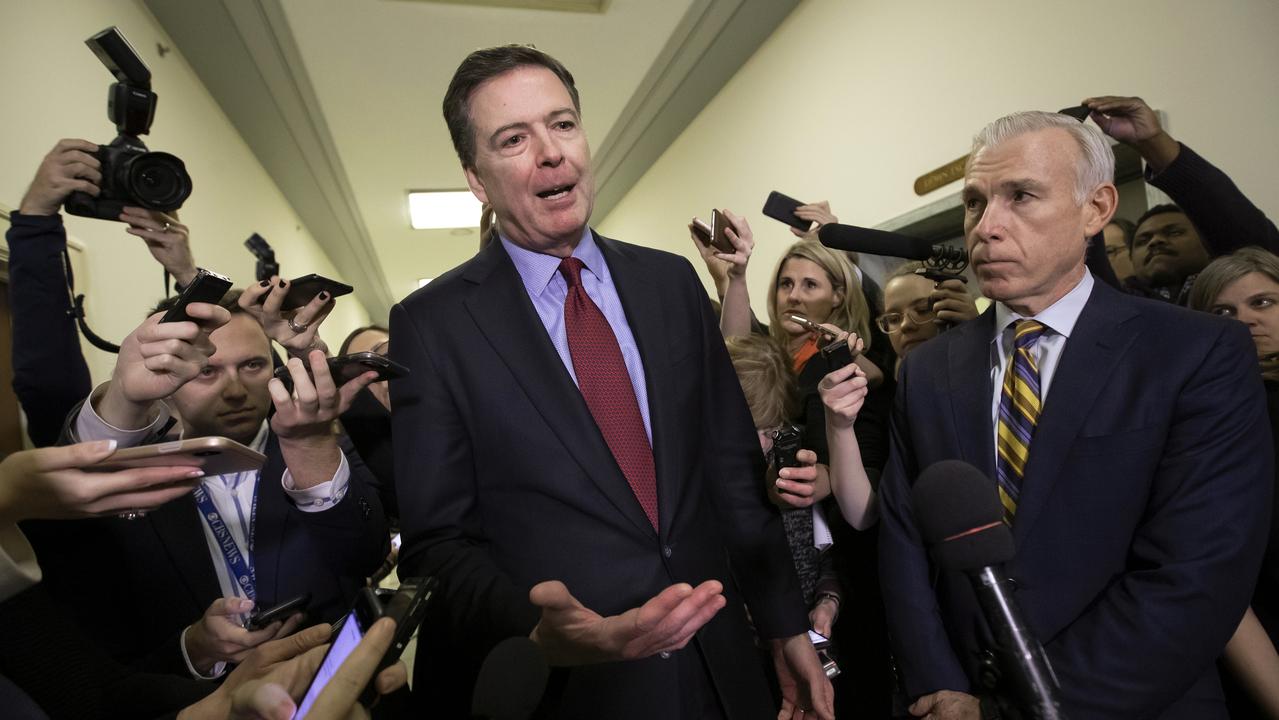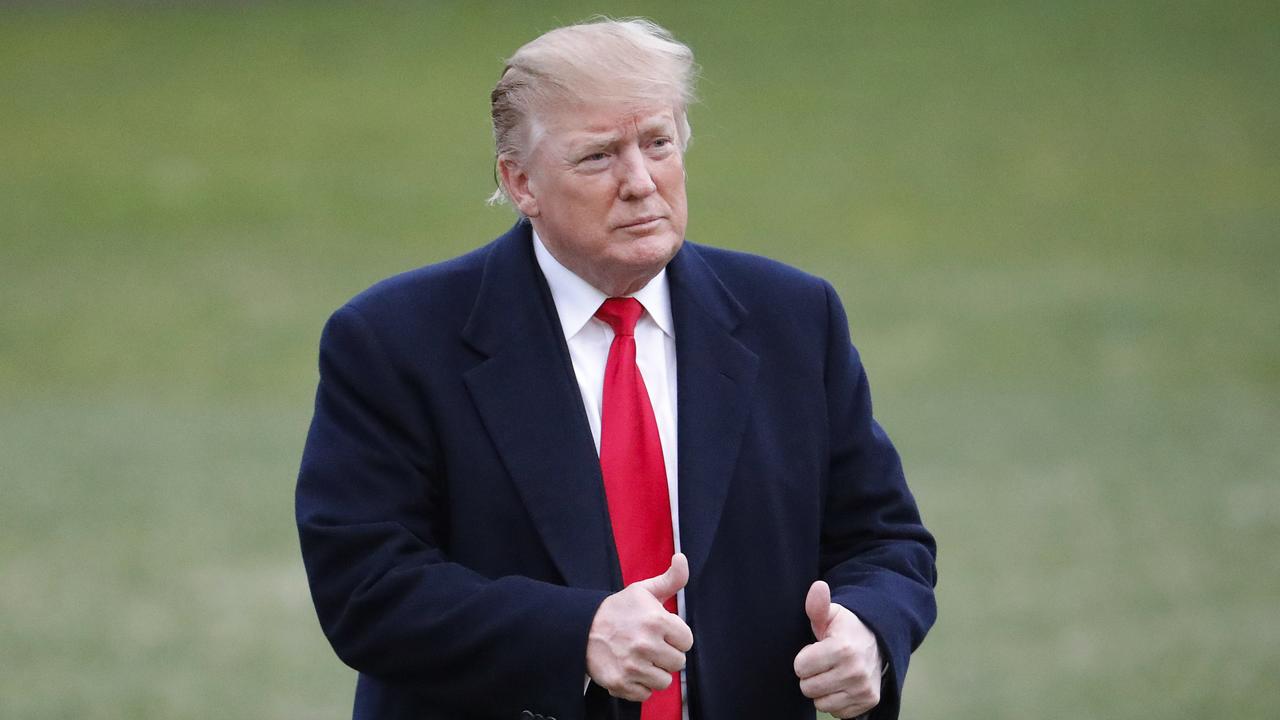Trump’s trade unorthodoxy far less fraught than Brexit

Trade policy has been a newsworthy subject for commentators at large in Europe, North America and Asia since Donald Trump’s election and the Brexit referendum in Britain. It remains so. The general consequence is the constant question: Is the global trading system under threat?
Trump’s clumsy plans to turn US policy on its head and Theresa May’s inability to turn British policy in any direction to implement Brexit offer journalists and analysts plenty of scope for comment.
Australia has chosen its own peculiar bent. Under Julie Bishop as foreign minister, the priorities on the foreign affairs side of the Department of Foreign Affairs and Trade broadly focused on political military (pol-mil) affairs. Given concern about political relations with China and tensions in the South China Sea, senior Chinese officials refused to meet Australian ministers for about a year.
On the trade side, the relationship appears to be more business as usual. China is Australia’s biggest trading partner, taking 60 per cent of our exports.
Trump brought an eccentric trade policy to his presidency. The only acceptable trade agreements had to deliver a balanced trade ledger surplus to the US. He scotched US engagement in the Trans-Pacific Partnership free trade agreement that had been largely driven by the Obama administration. He initially opposed renewal of the North American Free Trade Agreement. And he raised tariffs on steel imports to promote jobs in the US steel industry — to the detriment of much larger steel-consuming industries.
Economists at large were initially perturbed by these deviations from traditional free-market trade policy. Two years on, Trump’s trade policy is becoming more moderate. The major issue now is trade with China.
The particular dismay for Australia and other Asia-Pacific trading economies was the sidelining by the President of the TPP. Regardless, the remaining 11 Asia-Pacific economies, led by Japan and Australia, reshaped the agreement as the Comprehensive and Progressive TPP. The agreement is in effect for seven of the participating countries. There’s an open invitation for the US to rejoin, but this remains off the agenda for Trump’s current term of office.
This agreement is of particular importance because it advances trade rules to meet the evolving global economy, with emergence of the impact of information technology on trade, and lays a foundation for a broader free trade agreement among the 22 members of APEC. A long-term framework for a free trade agreement among that group was mapped under Chinese and US stewardship three years ago.
While this remains on the long-term agenda of the trade side of DFAT, political military affairs have held greater sway in its foreign affairs side. Concern about Chinese strategic policy, in particular in the South China Sea, has led to substitution of “Indo” for “Asia”. Regardless of the longstanding APEC concept, Indo-Pacific is a new paradigm.
Looking at these issues through a pol-mil lens paints a different picture to that through an APEC lens. The pol-mil interest is to build a common strategic interest, with a distinct sideways focus on Beijing. Indian engagement is key, but it has revealed itself as less interested in joining a cadre with the aim to strategically curtail China.
As well, the World Trade Organisation has never been a comfortable fit for India. India’s central government does not control taxes or regulate tariffs. India cannot join action to liberalise global trade, so it acts as spoiler — giving comfort to the more than 100 developing-country members of WTO (out of a total of 170), many of which also cannot manage trade liberalisation. Despite criticisms about China’s compliance with WTO rules from Washington, it is, by general standards, a responsible member.
The dramatic impacts on international trade today — not just Brexit but even One Belt, One Road — seep into concerns about expansion of Chinese military influence. That is because few outside the dry arena of trade law understand trade policy. Trade is one of the few areas where international trade law is legally binding. This is a feature of the obligations of membership of the WTO. As well, parties to smaller trade agreements, such as the bilateral and now larger regional trade agreements, are beginning to carry legal force.
Since Trump’s election and the decision of a majority of Britons to vote to leave the EU, a commonplace view among commentators is that global trade has been damaged and economic instability is imminent. Coincidentally, China has become belligerent over its claim to rights over the South China Sea. One result is Australian pol-mil analysis has become a leading function in DFAT.
The economic significance of trade policy has become formally subsumed into that policy frame. But there is another reality deserving attention. Australia played a leading role, with Japan, in ensuring the TPP trade agreement that Trump abandoned was still brought into force. It remains ready to make room for the US should its trade policy change, and is supported by a significant proportion of the US congress.
The problem of the pol-mil community is failure to understand the strategic importance of the economic interdependence that has been progressively built over the past quarter of a century among more open economies.
APEC is the primary platform for building this. It has had little impact in Europe but it is significant in the Asia-Pacific region.
At the same time, Trump won office. Among his campaign goals, he committed to reducing China’s “unfair” approach to international trade. This idea is now bordering on conventional wisdom. Journalists in Britain remain on the search for angles to find solutions for, or the causes of, the mess May has made of the Brexit conundrums. Those in Brussels align with the rest of the EU, savouring the mess they see in Trump’s assault on established trade policy mores.
Will Trump trump China in trade? Signs so far are that he and China will concede, but this is likely to be done quite diplomatically. President Xi Jinping and Trump have demonstrated cordiality in their meetings. The Trump style is shaping up as a mixture of diplomatic aggression and mannered diplomacy. While Trump has been heavy-handed and rude with some, such as Canada’s Prime Minister Justin Trudeau, he has gone out of his way to be polite, even convivial, to Xi.
Trump criticised China’s trade surplus with the US well before he was elected. Observations by economists that trade between parties did not have to be in balance to secure benefit for both parties never washed with Trump.
He came to office declaring any trade agreement that had the US in deficit was to be remade. Yet he went along with a revised bilateral agreement with South Korea on a primary condition that barriers against imports of US-made vehicles were reduced. Negotiations with Japan are expected to begin shortly. It is a legitimate complaint. Both have restricted imports of vehicles for years, usually pointing to some contrived hurdle.
Both countries have reason as well to accommodate some of Trump’s calls. Trump acted swiftly when North Korea started launching (unarmed) ballistic test missiles over South Korea. This bothered China, which encouraged North Korea to desist. North Korea’s leader declared to Trump that its nuclear weapon facilities would be dismantled, but this is yet to be seen.
Beijing has heeded Trump’s trade complaints. At the annual Boao Forum for Asia (a Chinese version of Davos) last April, Xi announced China would cease requiring foreign investors to hand over intellectual property, particularly in the electronics sector, as a condition for investing and operating in China. He also announced that China’s requirement that foreign car construction in China (the VW and General Motors groups were the largest) must have 50 per cent Chinese ownership would be phased out. To date, Trump has been silent on these intentions.
While the relationship between Xi and Trump remains very cordial, the US has already slapped tariffs on $US250 billion worth of Chinese products, and has threatened tariffs on $US267bn more. China has responded by imposing tariffs of between 5 and 25 percentage points on about $US110bn of selected US products, and is threatening qualitative measures that would affect US businesses operating in China.
Both sides agreed to a three-month moratorium (beginning in December) to enable negotiation of an agreement, and proposed putting on ice a further rise in tariffs. Negotiations are under way. The most important players in this will be US Treasury Secretary Steven Mnuchin, US Trade Representative Robert Lighthizer and China’s Vice-Premier Liu He, Xi’s financial adviser, who have been managing on/off discussions over how to address this dispute for some time.
The timeline set by Washington and Beijing may hinder completion of the negotiations by the deadline. Given the importance of the negotiations, if an extension is necessary, it should be expected.
There is another factor that will bear on these dealings and provide prospect of resolution. Leading US financial institutions, such as the Federal Reserve, are starting to warn of a slowdown in the global economy. To date the Trump administration has experienced two years of strong economic growth and low unemployment.
Economists and the Fed warned when Trump reduced taxes on funds being returned from international arms of US companies that the level of debt in the US was still too high. The President showed no interest in addressing this, revelling instead in the record growth enjoyed by the US over the past two years.
The impact of this risk is even greater for China. Its growth has been slipping steadily and concern is rising in domestic financial circles that China has an unmanageable debt problem. A key factor here is China’s extensive grey financial markets. Analysts have been warning for some time that unless it is reined in, China will face a substantial financial collapse. Some speculate that Xi’s recent acquisition of absolute power may be to build a political wall to manage civil disturbance in China.
At least there is clear sense of direction in the Chinese-US negotiations. The same cannot be said of the conundrum May has put before the British people and parliament. She has dug herself into an almost impossible position. The House of Commons voted against her strategy to deal with the EU.
She is now attempting to persuade Brussels to be more flexible, apparently unaware that the main thing the EU (with 28 governments as parties, soon to be 27) cannot do is be flexible. This is traditionally attributed by outsiders to EU pigheadedness. It is simpler. The EU is incapable of completing major changes.
When it last added former Soviet satellite states to the EU after Moscow stepped back, the tariff schedules of those member states, all WTO members, needed to be harmonised with EU schedules. This process, now a decade old, remains unfinished. May has blundered twice: first taking advice from anti-Brexit elements that some sort of semi-association could be entered into, then agreeing to an unclear exit strategy that the European Commission endorsed and refused to budge from.
Trump is looking half reasonable. It is clear Beijing wants some sort of settlement. But as ever with the President, it is too risky to try to anticipate too much until he is close to finalising a position.
Alan Oxley is a former ambassador to the GATT and the principal of ITS Global, Australia’s foremost trade policy advisory.



To join the conversation, please log in. Don't have an account? Register
Join the conversation, you are commenting as Logout